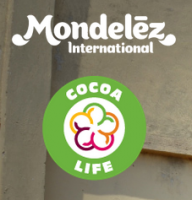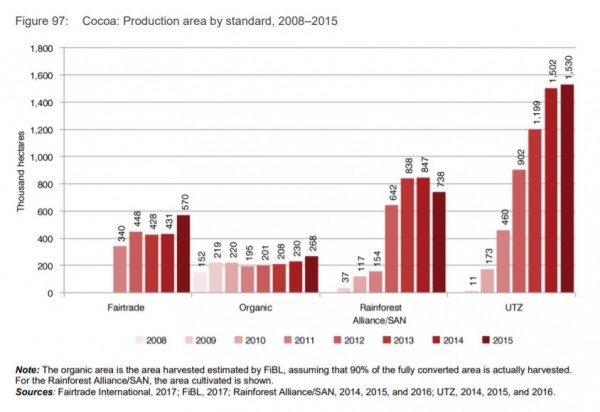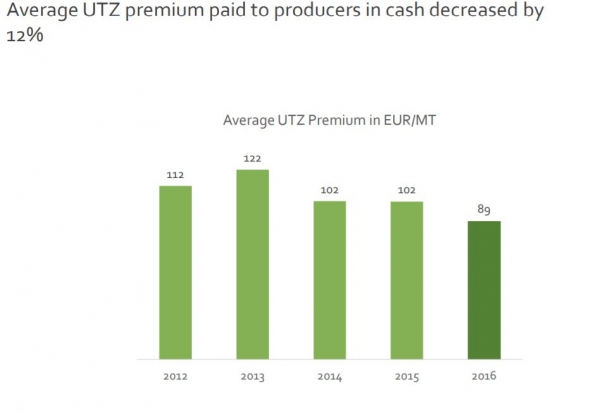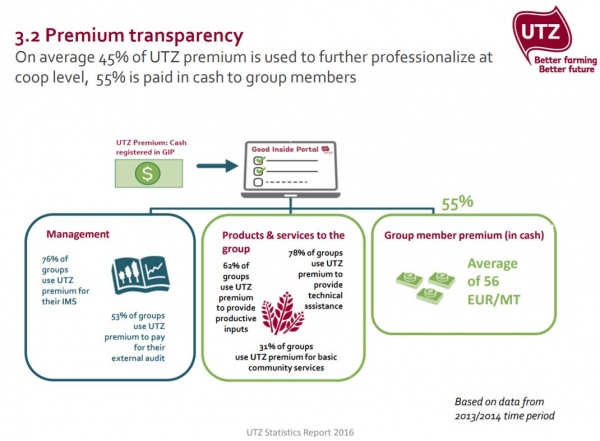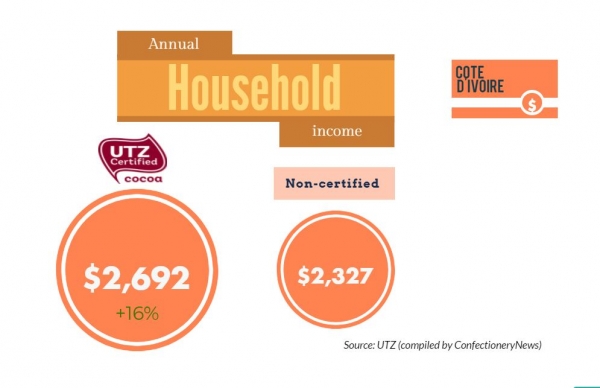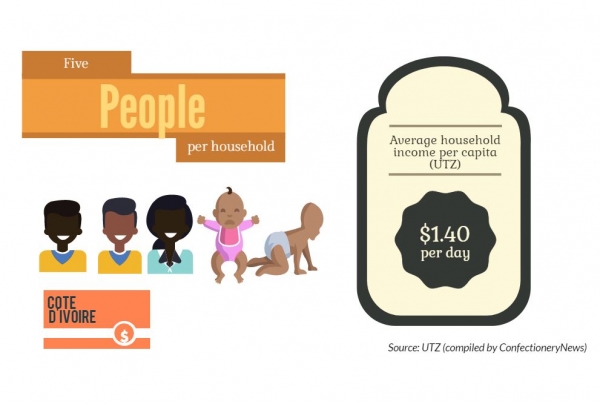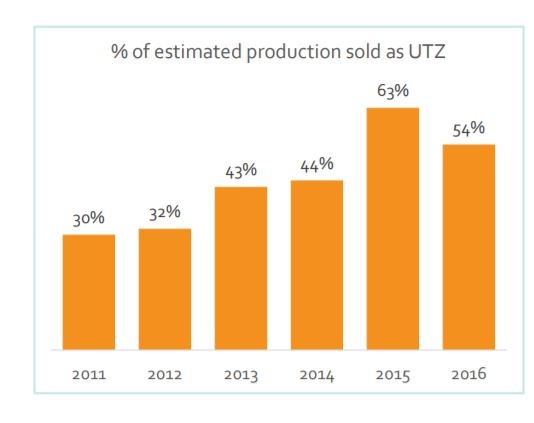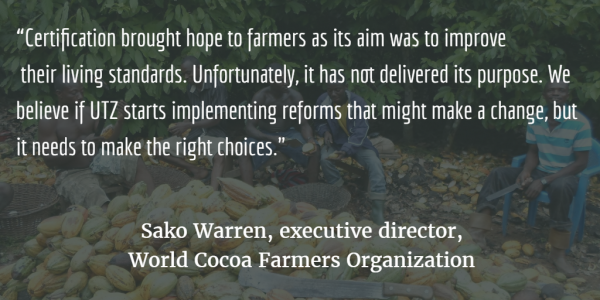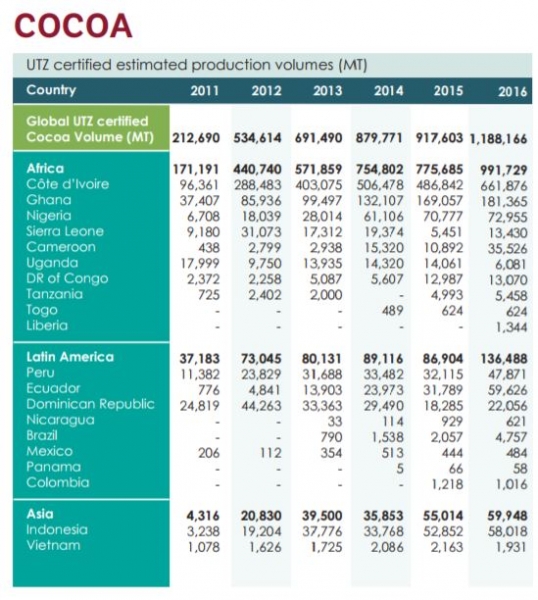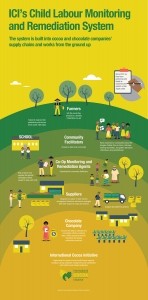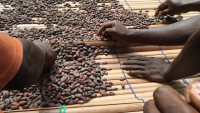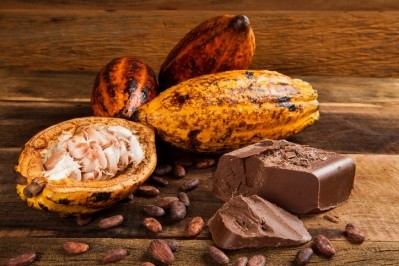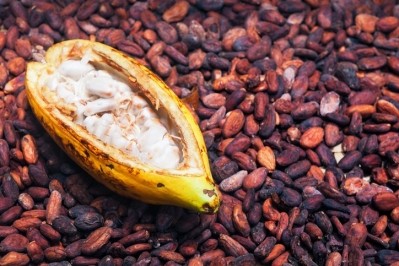Mini-documentary
Fair game: How effective is cocoa certification?
A report this year by the International Trade Center (ITC) estimated 23% of the global cocoa area in 2015 was certified by one of the four major labels: UTZ, Fairtrade, Rainforest Alliance and Organic, compared to roughly 11% in 2011.
Hershey, Ferrero and Mars have driven the surge by committing to 100% sustainable cocoa from certified sources by 2020.
Pledges came as NGOs pushed the chocolate industry to commit to fully certified cocoa amid ongoing reports of widespread unlawful child labor in the sector.
Another way
Some large firms such as Nestlé and Lindt have focused on their own sustainability programs rather than exclusively on certification. Cadbury maker Mondelēz even says it is transitioning out of certified cocoa to eventually source all cocoa from its own Cocoa Life program.
$600m spent on certified cocoa
UTZ – which entered cocoa in 2007 - overtook Fairtrade and Rainforest Alliance to become the dominant label in certified cocoa in 2011.
Its cocoa program is today present in 20 countries covering 614,405 farmers with volumes found in popular chocolate brands such as Ritter Sport and variants of KitKat.
UTZ made up roughly 15% of the cocoa area in 2015 and is set to grow further.
The Amsterdam-headquartered organization will finalize a merger with Rainforest Alliance in January 2018 to account for around 79%1 of sales in the certified cocoa market.
But what impact has buying certified cocoa had on farmer income, poverty levels and child labor?
ConfectioneryNews was last year in Côte d’Ivoire touring farms certified by UTZ and asked stakeholders if it is making a difference.
Mars: ‘It’s not the full answer’
“It’s a great foundational start,” said Barry Parkin, chief sustainability officer of Mars and chairman of industry-led trade body the World Cocoa Foundation (WCF).
Mars estimates the chocolate industry has invested approximately $600m in certified cocoa from 2011 to 2016.
In 2009, the Snickers maker became the first major chocolate company to commit to 100% certified cocoa by 2020.
Today, Mars accounts for around 10% of the total industry supply of certified cocoa. It sourced roughly half of its volumes as certified in 2016, mainly from UTZ, Rainforest Alliance and Fairtrade.
Speaking to ConfectioneryNews at last year’s WCF partnership meeting in Abidjan, Parkin said good agricultural practice training through certification, as well as price premiums, had improved farmer income, while he said certified cocoa farmers’ children are likelier to be in school.
“It’s a tool - it’s not the full answer. It’s helpful, but not sufficient on the way to sustainability,” said the Mars chief.
Premiums and poverty alleviation
But is it making farmers any better off?
A major component of certification is the price premium.
UTZ and Rainforest Alliance cocoa premiums are not fixed. The farmer and the first buyer negotiate the premium on top of the London market price.
This differs to Fairtrade, which guarantees a premium of $200 per metric ton (MT) and a fixed minimum price of $2,000 per MT.
The UTZ premium paid to farmers declined 13% in 2016 to €89 ($105) per MT.
“Premiums on their own will not bring cocoa farmers out of poverty,” said Taco Terheijden, director of cocoa sustainability at Cargill.
“Premiums more than anything else are an incentive for farmers to do things differently. That we believe will lead to more thriving communities,” he said.
On average, 45% of the UTZ cocoa premium goes to the farmer’s cooperative to provide training and inputs, so only 55% is paid to a certified farmer in cash (€56/$66.09 per MT).
How much more do farmers earn?
On average, a smallholder cocoa farmer produces 500–600 kg per hectare on a farm size of three to four hectares, according to estimates by academics.
This means an UTZ cocoa premium will provide the average global cocoa farmer around €84 to €134 ($99 to $158) cash-in-hand a year extra.
UTZ says average annual household incomes for UTZ certified farmers in Côte d’Ivoire is 16% greater than for non-certified cocoa farmers in the country:
But with an average of five people per household in the primary cocoa growing nation, an UTZ certified cocoa farmer in Côte d’Ivoire has an average household income per capita of $1.40 a day.
This falls short of the World Bank’s international poverty line of $1.90 a day.
A boost in productivity?
But Siriki Diakite, regional representation West Africa at UTZ, said challenges of low yields, child labor would be worse off without certification.
“Without certification the challenges would have remained there and [would have] gone up even,” he said.
According to a 2014 study independently carried out by LEI Wageningen UR, the average yield of UTZ certified Ivorian farmers was 467 kg per hectare.
By comparison, Barry Callebaut funded research by Agence Française du Développement found average yields of 435 kg per hectare for Ivorian farmers based on surveys of non-certified and certified farmers between 2013 and 2015. UTZ says average yields of non-certified farmers will almost certainly be lower.
An Ivorian farmer of the cooperative Coopama Coop-Ca we spoke to said UTZ certification premiums had benefitted him personally.
“We are going to have a bonus when times are hard…with that we help each other to deal with problems and illnesses,” adding he was able to build a five-bed house and send his two children to town to study.
However, he said things were becoming tougher due to the effects of climate change.
‘Farmers are vulnerable’
Antonie Fountain, managing director of NGO the VOICE Network, said: “Farmers are vulnerable that they are not being paid enough premium.
“Premium is not enough to bring a farmer out of poverty, but any premium will bring a farmer closer to the poverty line.”
He said a higher premium was necessary to recover the costs farmers bear from becoming certified.
A cocoa farmer pays no direct fees to UTZ, but incurs costs of between $500 and $4,500 to the certification body carrying out an audit, estimates ITC. UTZ said these costs are often split between groups of farmers that become certfied together.
Sold as certified
But once certified, a farmer may not necessarily sell all his or her cocoa as certified.
Foundation said companies often buy only a small percentage of a certified farmers volumes on certification terms with a premium.
UTZ estimates 54% of UTZ certified cocoa volumes globally were sold on UTZ terms in 2016, a decline on the previous year:
Reaching the majority
Sako Warren, executive director of farmer trade body the World Cocoa Farmers Organization, said: “Certification brought hope to farmers, as its aim was to improve their living standards. Unfortunately, it has not delivered its purpose.”
He argued certification’s reach was limited, since farmers must be part of an organized group or cooperative to profit.
Only 20-30% of cocoa farmers in the main growing nation Côte d’Ivoire are part of a group or co-op, UTZ told us during a press trip last year.
However, Diakite of UTZ said there was internal growth in existing certified cooperatives prompting new members to join and to work towards certification.
Cargill: ‘First step’
Terheijden of Cargill, said: “Certification on its own will not do all what we think needs to be done, but it is an essential element and very often the first step.”
Cargill – a major supplier to the chocolate industry - purchases around 20% of annual Ivorian cocoa crop. Around 72% of its cocoa volumes from the country are third party certified, roughly 60% by UTZ.
Terheijden called for more rigorous auditing of certified farms and stricter rules of entry for a cooperative to become certified.
Bart Van der Linden, a business consultant at Supply Chain Integrity, said in a blog post last month: “Many 'underperforming' cocoa farmers and cocoa farmer groups simply get certified, with all 'performing' cocoa farmers and cocoa farmer groups rated equal.”
Van der Linden said this was first identified in an UTZ Cocoa Credibility Project Report in 2013-2014 financed by Mars, yet persists.
UTZ certified cooperatives must comply with the organization’s Code of Conduct. See HERE for further details.
Preventing child labor
Historically, certification audits have tended to take place once a year on select farms.
Critics argue these audits have done little to get the estimated 2.04m children working illegally on Ivorian and Ghanaian cocoa farms out of hazardous work.
Nick Weatherill, executive director of the International Cocoa Initiative (ICI), said: “If you’re trying to use that light and occasional coverage to check for the occurrence of something that happens form one day to the next…you’re not really going to be picking up on the issue.
“It’s a model where, if child labor is found, then farmers risk to lose their certificates then of course that threat of punishment drives the issue underground.”
CLMRS model
But, UTZ is now working with the International Cocoa Initiative for a community-led Child Labor Monitoring & Remediation System (CLMRS), which relies on community appointed facilitators to check for incidents of child labor.
ICI pioneered the system in collaboration with Nestlé. In February, ICI told us 4,680 children were found to be involved in hazardous activities in cocoa through the Nestlé’s CLMRS pilot since 2012.
Barry Callebaut found 247 cases of the worst forms of child labor in its cocoa supply chain using ICI’s CLMRS and equivalent systems from September 2016 to August 2017.
“We’re finding higher levels of child labor than were identified before,” said Weatherill. “But the good news is that certifiers are seeing that and saying how can we bring these models into our models so we can carry the more effective approach along.”
Functioning cooperatives
Certification tends to rely on cooperatives structures.
Antoine Fountain, executive director of the VOICE Network said: “The cooperatives need to be functioning well for this to work and that is defiantly not always the case. There’s financial abuse, there’s misdealing…members can leave out of dissatisfaction.
“One thing that’s needed is a stronger coop – better leadership, better transparency and better management.”
Only one co-op that produced no track record of an internal management system was decertified by UTZ in Cote d’Ivoire in the last year.
Diakite of UTZ said: “It’s clear to us with the existing auditing process in line with our auditing procedures things should happen accordingly and that’s what we’re seeing in the field.”
Certification after CEN/ISO
The European Committee for Standardization (CEN) and the International Organization for Standardization (ISO) will publish a joint standard for traceable and sustainable cocoa next year.
The standard – originally planned for 2016 – can be used as a voluntary reference for company programs and certification bodies.
Fountain said he expects certifiers and company programs are likely to become compliant with the standard.
“…The CEN/ISO standard is better than anything we have at the moment,” he said.
“The way I envisage it: CEN/ISO will be the standard for the standards…which will require all the current standards to up their game,” said the VOICE Network executive director.
ICI’s Nick Weatherill said certification can help drive the CEN/ISO standard, but added companies have an alternative to meet the CEN/ISO standards without certification.
Cargill’s Terheijden said there will be a constant for certification standards, but said these need to evolve.
“The certification bodies are in a good position to innovate and invest in other tools – for instance traceability tools,” he said.
1Market share may be lower as some cocoa cooperatives or groups may be doubled certified.
